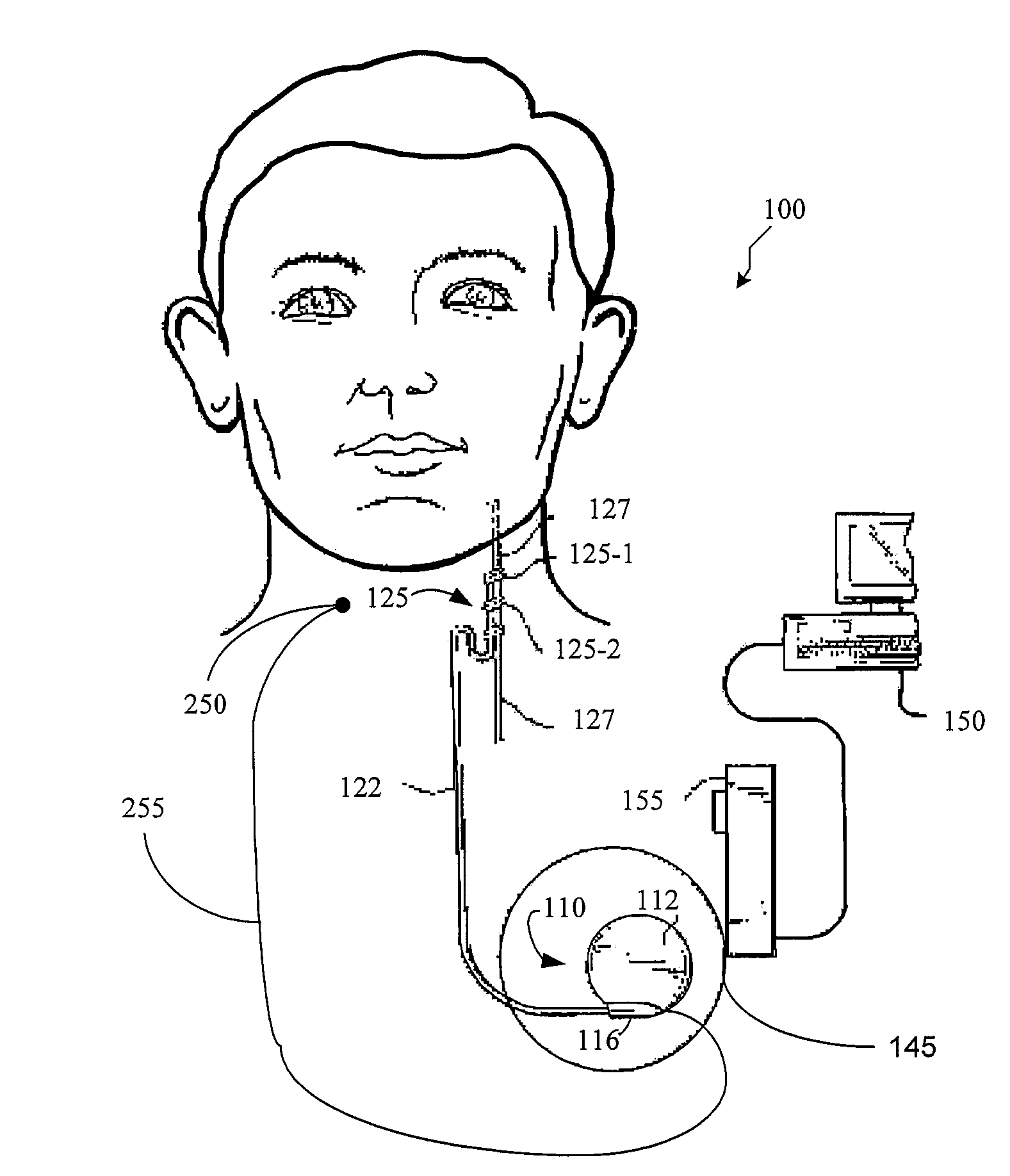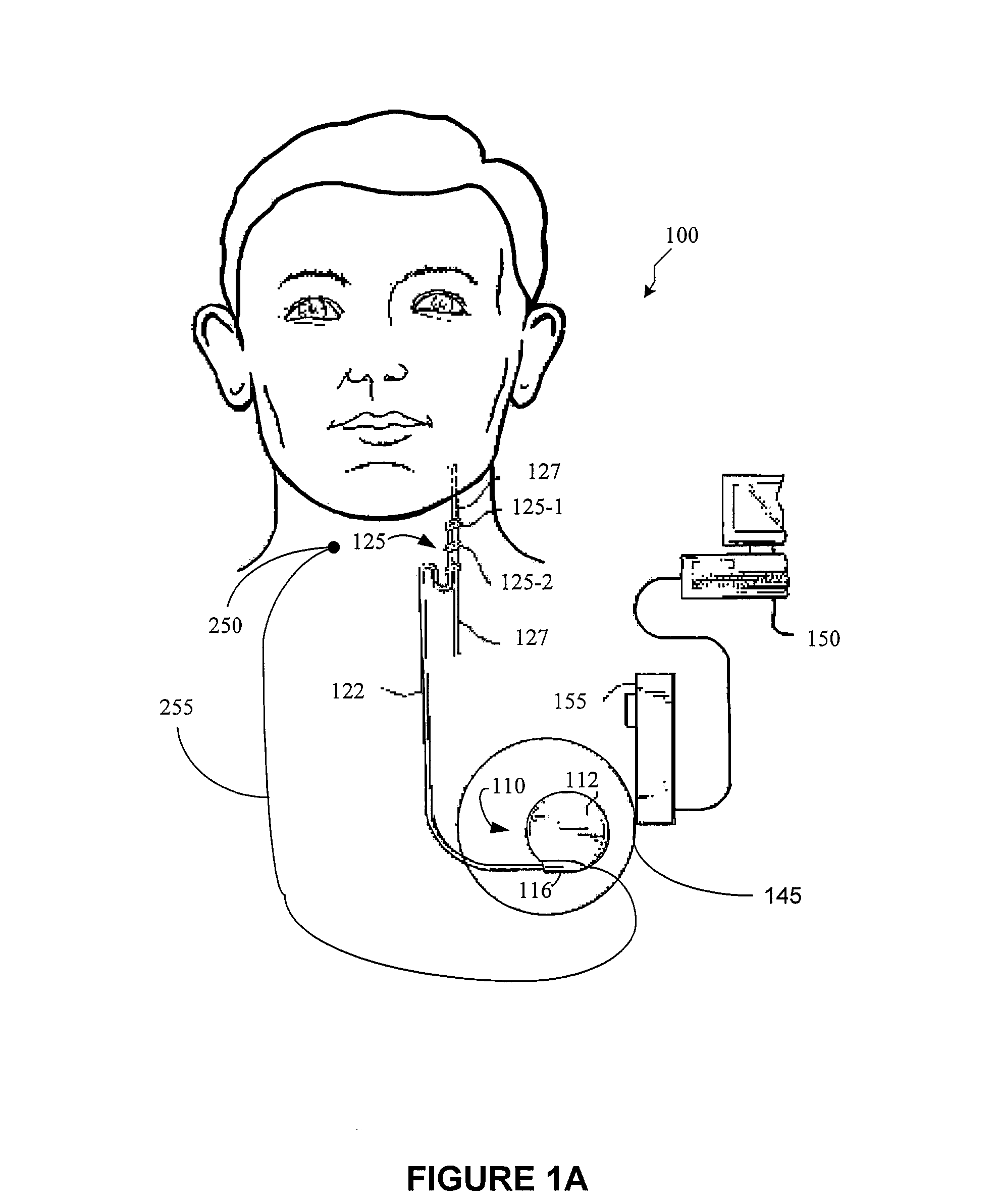Dosing Limitation for an Implantable Medical Device
a medical device and limitation technology, applied in the field of medical devices, can solve the problems of reducing the efficacy of neurostimulation by imd, affecting the safety and efficacy of neurostimulation, and affecting the safety of neurostimulation,
- Summary
- Abstract
- Description
- Claims
- Application Information
AI Technical Summary
Benefits of technology
Problems solved by technology
Method used
Image
Examples
Embodiment Construction
[0019]Illustrative embodiments of the invention are described herein. In the interest of clarity, not all features of an actual implementation are described in this specification. In the development of any such actual embodiment, numerous implementation-specific decisions must be made to achieve the design-specific goals, which will vary from one implementation to another. It will be appreciated that such a development effort, while possibly complex and time-consuming, would nevertheless be a routine undertaking for persons of ordinary skill in the art having the benefit of this disclosure.
[0020]Embodiments of the present invention provide for an input to the IMD that would prompt the IMD to operate in an alternative mode for a predetermined time period, or until another triggering input is received. The alternative mode may provide for prompting an alternative operation of the IMD, by which is meant a mode other than a primary mode. A primary mode is a preprogrammed mode in which t...
PUM
 Login to View More
Login to View More Abstract
Description
Claims
Application Information
 Login to View More
Login to View More - R&D
- Intellectual Property
- Life Sciences
- Materials
- Tech Scout
- Unparalleled Data Quality
- Higher Quality Content
- 60% Fewer Hallucinations
Browse by: Latest US Patents, China's latest patents, Technical Efficacy Thesaurus, Application Domain, Technology Topic, Popular Technical Reports.
© 2025 PatSnap. All rights reserved.Legal|Privacy policy|Modern Slavery Act Transparency Statement|Sitemap|About US| Contact US: help@patsnap.com



